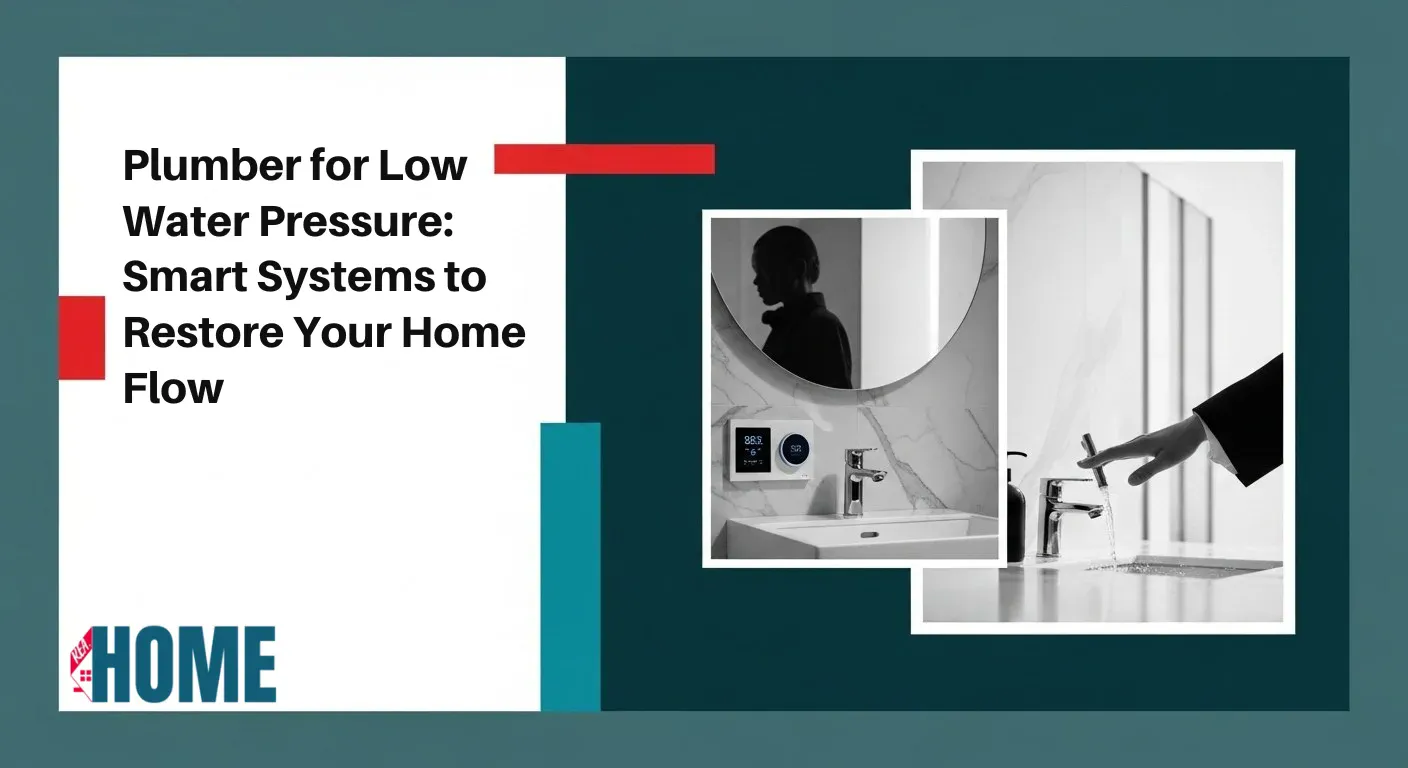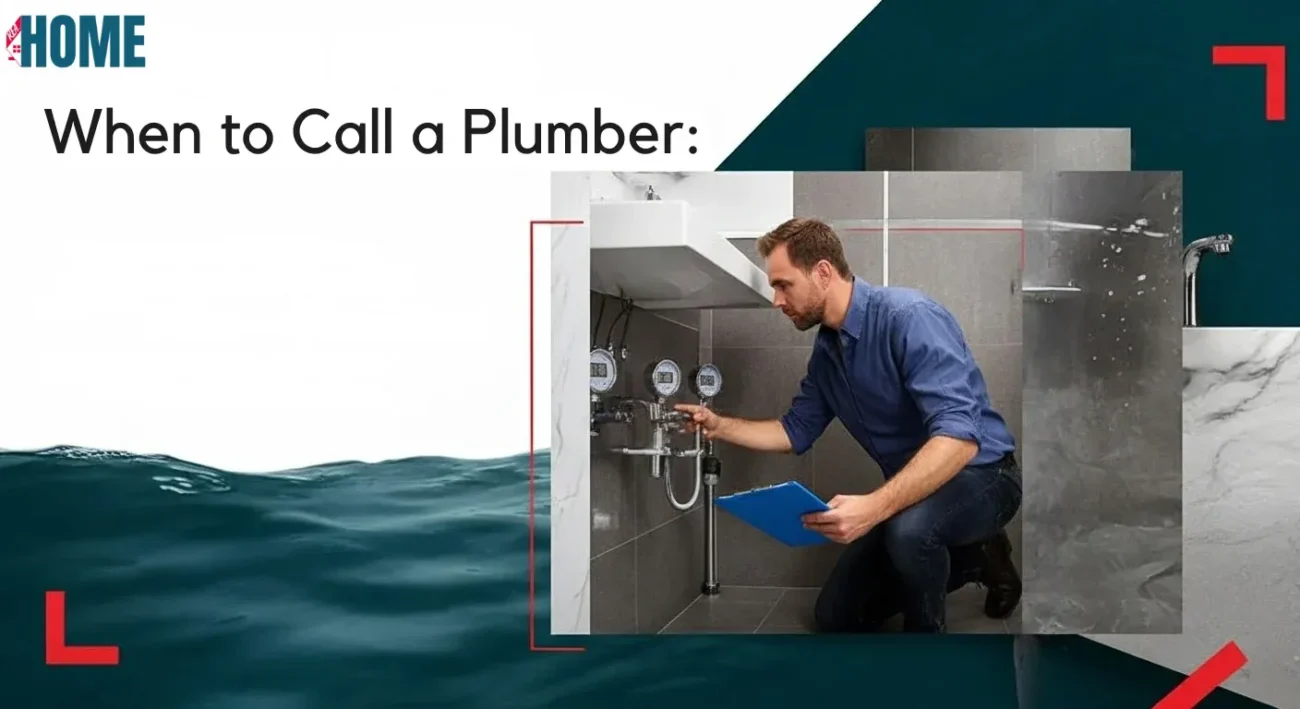
Home & Decor Blogs: DIY, Interior Design & Lifestyle Ideas
Plumber for Low Water Pressure: Smart Systems to Restore Your Home Flow

Does your morning shower feel like a sad trickle instead of a refreshing blast, Are your taps taking forever to fill a pot of water, or your washing machine complaining about slow inflow, If you’ve been battling inconsistent or low water pressure at home improvement, you’re not alone and there’s more to it than just “bad luck.”
Why Does Low Water Pressure Happen
Understand the nature of low water pressure:
Low water pressure isn’t just “the tap is slow.” It means the water flow (volume per time) is restricted by something in the system either your home’s plumbing or the supply feeding it. As one article says, home pressure problems often arise when the reading falls below the ideal 40-60 psi range. Nichols Mechanical+1
Common causes you’ll find in many homes:
Here are a few of the usual suspects:
- Mineral buildup or scale: Hard water leaves calcium and magnesium deposits inside pipes and fixtures, narrowing the flow path.
- Leaks or damaged pipes: Even a slow leak means less available pressure for the rest of the system.
- Faulty or closed valves / regulators: If your main shut-off or pressure regulator is partially closed or failing, your pressure can drop dramatically.
- Clogged fixtures (aerators, showerheads, filters): These small blockages can make a big difference in perceived pressure.
- System-wide supply issues: Sometimes the problem isn’t inside your home but with the municipal supply or neighborhood water line.
When to Call a Plumber

Recognising when DIY won’t cut it
If you’ve tried cleaning showerheads, checked valves, and it’s still slow — it might be time to call a pro. Some red flags:
- The low pressure affects all taps in the home (so not just one fixture)
- The drop in pressure was sudden
- You’ve noticed leaks, odd noises, or the pressure regulator seems fiddled with
These indicators line up with what plumbing firms suggest when a plumber should be contacted.
What a good plumber checks
A trained plumber (and this is where they bring value) will likely:
- Inspect the main supply line from the meter, verifying the valve is fully open.
- Check for leaks via the water meter test (no usage, meter still runs = leak).
- Measure the home’s pressure (usually with a gauge) to determine if it’s in the correct range.
- Assess piping material and condition (older galvanized steel, rusted/corroded = bigger job).
- Evaluate fixtures for blockages, clean or replace aerators and showerheads.
- Consider broader supply issues or whether your home’s plumbing design needs upgrading (e.g., pressure booster pump, re piping).
What “water smart” advice they might give
As plumbing systems have evolved, many professionals now recommend proactive improvements rather than reactive fixes. For example:
- Installing flow sensors or smart pressure monitors
- Upgrading to corrosion-resistant piping
- Adding booster pumps or pressure tanks if the municipal supply is weak
These go beyond “fix the leak” and head toward future-proofing your home.
WaterSmart Systems for Your Home
By “WaterSmart,” I mean integrating modern technologies and smarter plumbing system components that optimise water flow, detect problems, and maintain healthy pressure. It’s not a brand name here (even though some companies use the term); it’s a concept: home plumbing designed intelligently.
Key Components of a WaterSmart Setup
Smart pressure monitoring
You can install a gauge with a digital display (or even connected to an app) that alerts you if pressure drops or fluctuates beyond a threshold. Early warning means you can act before it becomes a full-blown problem.
Pressure boosting equipment
If your supply line is weak, adding a booster pump or a pressure tank keeps your home’s internal system at the right pressure even when the external supply falters. Some older articles mention booster pumps as a solution.
Corrosion resistant piping and fittings
If your home still uses older galvanized steel or corroded pipe, a WaterSmart upgrade includes replacing those with modern materials (PEX, copper, etc.). This prevents future scale and rust buildup.
Smart flow/faucet fixtures
Installing low-flow aerators or showerheads doesn’t sound like boosting pressure but if your pipes are under strain, the right fixture can make the flow feel better while reducing strain on the system. Plus, some smart fixtures provide data on flow and alert you to drips/leaks.
Water quality aware systems
Hard water and mineral buildup are big culprits for low pressure. A WaterSmart home might include a water softener (correctly sized) or filtration system that keeps the plumbing clear. Note: softeners themselves can create pressure issues if undersized or clogged.
Table: Common Problems & WaterSmart/Plumber Solutions
| Problem | Immediate Fix by Plumber | WaterSmart Upgrade |
|---|---|---|
| Low flow from all fixtures | Replace faulty pressure regulator, clean supply line | Install smart pressure sensor, add booster pump if supply weak |
| One tap/shower weak | Clean or replace aerator/showerhead | Upgrade to smart fixture with flow monitoring |
| Older corroded pipes | Assess and replace damaged sections | Full repipe to modern material + corrosion monitoring |
| Hard water causing pressure drop | Clean scale & possibly install softener | Full filtration/softener system with maintenance alerts |
| Sudden drop in pressure | Check leak via meter, inspect main shut-off valve | Install leak sensor + automated shut-off valve |
FAQs
Q: What is considered “low water pressure”?
A: Generally, if filling a bathtub or running the shower takes much longer than it used to, or you’ve lost the “oomph” in your tap, that’s a good indicator. Some pros use a gauge and say under 40 psi is low.
Q: Can I fix low water pressure myself?
A: Yes for some cases. If it’s just a single tap or fixture, cleaning the aerator or showerhead might be enough. If it’s affecting the whole house, or you see leaks or corroded pipes, you’ll likely need a pro.
Q: How much does a plumber typically charge for low water pressure diagnosis?
A: It depends on your region and complexity. It might cover an inspection, measuring pressure, checking valve/tank, etc. But it’s worth it if it turns out to be a major leak or failing main line.
Q: How often should I upgrade or maintain water-smart systems?
A: Smart pressure monitors/checks can run continuously. Filters/softeners need maintenance (annually or as manufacturer suggests). Piping lifespan depends on material (modern PEX/copper can last decades).
Q: Can a water softener cause low water pressure?
A: Yes if it’s undersized, clogged, or bypass valve mis set, the softener system can restrict flow.
Final thoughts
Low water pressure doesn’t have to be something you just live with. With the right plumber and the right mindset toward smarter systems, you can restore your home’s water flow and avoid future headaches. Whether it’s installing a smart monitor, swapping out corroded pipes, or upgrading your softener or pressure tank, you’re reinforcing your plumbing for the long haul.
